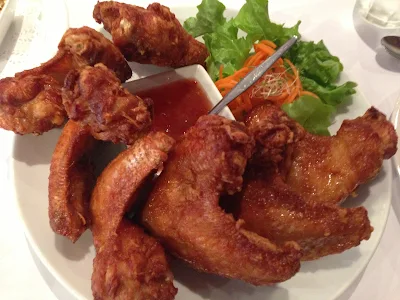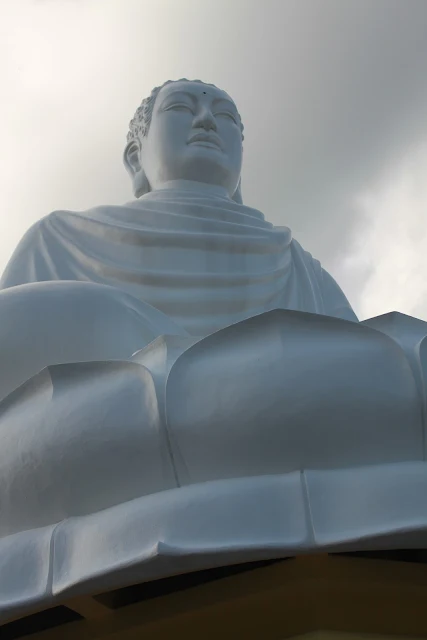Coming back from Kurri Kurri in the Hunter Valley, about two hour's drive north from the Sydney Harbour Bridge, my group of three stopped at Epping, a transit point for rail and bus in north-west Sydney. Jennifer suggested going to Pent-Thai for an early dinner. Opposite the train station along Oxford Street, the restaurant had staff dressed up in traditional Thai silk and colours. I had met the owner before elsewhere after being introduced by Jennifer and so I did have some expectations about this place after hearing so much about it. It was a late spring evening and we chose light selections to wind up the day.
The best dish we had, I reckoned, was the aromatic and bite-crunchy deep fried chicken wings, not over oily and served with lettuce and a kicker hot chili sauce. KFC, better watch out! We also liked the pad see ew, with wide and flat rice noodles bathed in a gooey but tasty gravy mixed with fresh chicken slices. I noticed the Crying Tiger pork in the menu but we did not have that. More than a couple of staff members came out from the kitchen to speak to us. There was the expected queue of take away customers and then as the evening wore on, more sit down diners, as we arrived rather early for dinner ourselves. We were delighted when we were offered a dish the staff were having for dinner themselves, an interesting mix of shrimp, chili and more stir fried to serve as an appetising condiment to consume best with steaming hot cooked jasmine rice. I understand that the chefs here hailed originally form southern Thailand.
The stir fried noodles shown above, although stacked with prawns on the shell, crunchy veg and flustering with wok flavours, was too sweet for our taste and preference. Still, Pent Thai offered an overall satisfying experience which puts it above its suburban location.
Atmosphere: Modern yet traditional.
Location: Suburban
Taste: Satisfying.
People Engagement: Above expectations.
Service: Friendly, quick and efficient.
Best Dish Experienced: Deep fried Chicken Wings
Best Time to Visit: Dinner time.
Would I Return? Yes.





























